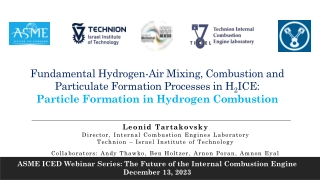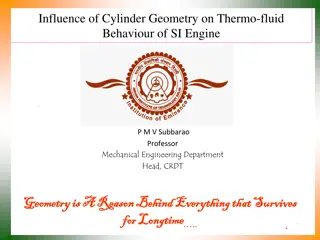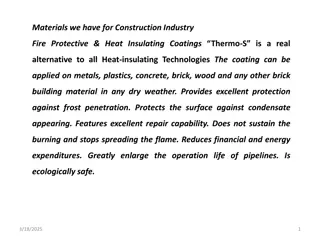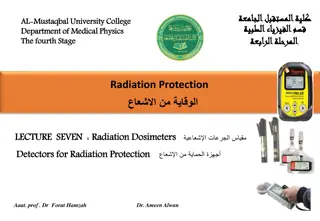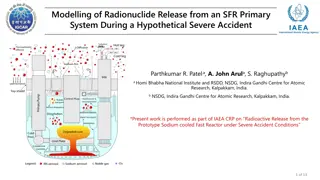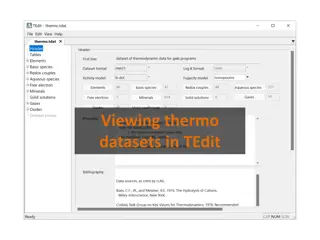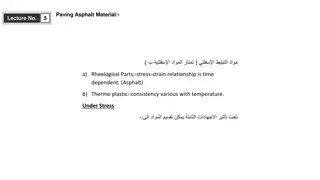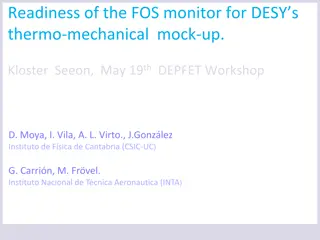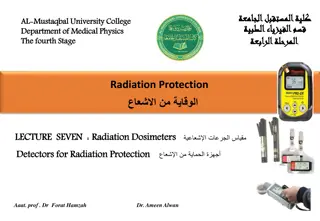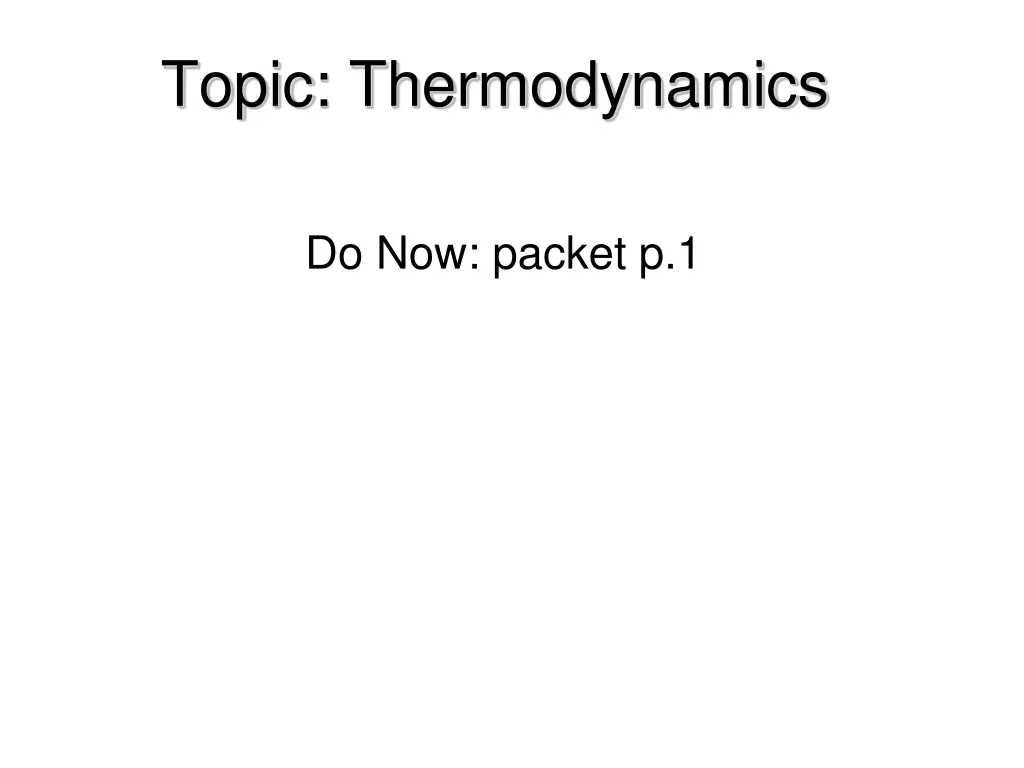
Understanding Thermodynamics in Chemical Reactions
Explore the fascinating world of thermodynamics, where energy changes drive physical and chemical transformations. Learn about exothermic and endothermic processes, enthalpy, and how thermodynamics determines reaction outcomes. Discover the significance of energy conservation and the impact on the surrounding environment.
Download Presentation

Please find below an Image/Link to download the presentation.
The content on the website is provided AS IS for your information and personal use only. It may not be sold, licensed, or shared on other websites without obtaining consent from the author. If you encounter any issues during the download, it is possible that the publisher has removed the file from their server.
You are allowed to download the files provided on this website for personal or commercial use, subject to the condition that they are used lawfully. All files are the property of their respective owners.
The content on the website is provided AS IS for your information and personal use only. It may not be sold, licensed, or shared on other websites without obtaining consent from the author.
E N D
Presentation Transcript
Topic: Thermodynamics Do Now: packet p.1
Every physical or chemical change is accompanied by energy change exothermic Energy released = _________________ endothermic Energy absorbed = _______________ G L S
Thermodynamics is the study of entropy and enthalpy changes that accompany chemical reactions Thermodynamics Tells us if a reaction will occur
The total amount of energy a substance contains depends on many factors, some of which are not totally understood it s impossible to know the total heat content of a substance. So scientists measure H H = enthalpy = the heat content of a system at constant pressure. It describes chemical PE stored in matter H = enthalpy (heat) of reaction H = Hproducts Hreactants the substances that exist at the end of the reaction and the enthalpy(heat) of the substances that exist at the beginning of the reaction --the difference between the enthalpy(heat) of
Thermochemical Equations balanced chemical equation shows physical state of all reactants & products gives energy change It can be written 2 ways energy term can be written as reactant or product OR H is given right after equation
4Fe(s) + 3O2(g) 2Fe2O3(s) + 1625 kJ OR 2Fe2O3(s) 4Fe(s) + 3O2(g) H = -1625 kJ NH4NO3(s) + 27 kJ NH4+(aq) + NO3-(aq) OR NH4+(aq) + NO3-(aq) H = 27 kJ NH4NO3(s)
If H is negative - H = exothermic - Hproducts < Hreactants - PE of Products < PE of Reactant - Example: 4Fe(s) + 3O2(g) 2Fe2O3(s) + 1625 kJ - H = -1625kJ
If H is positive + H = endothermic - Hproducts > Hreactants - PE of Products > PE of Reactant Example: NH4NO3(s) + 27 kJ NH4+(aq) + NO3-(aq) - H = +27kJ
Since energy is conversedthe system changes in one direction and the surrounding have to change in the opposite direction A. Reaction is Exothermic, environment gets _________________ warmer Universe Environment System B. Reaction is Endothermic, environment gets _________________ colder A B
For any reaction occurring at constant pressure H = Q Q = mC T Q = Energy change m = mass of water C = specific heat of water T = temperature change = Tf Ti
Since there are different types of reactions, you have various H s Hcomb = enthalpy (heat) of combustion the enthalpy change for the complete bunring of one mole of the substance Hformation = enthalpy (heat) of formation the enthalpy change for the formation of a compound from its constituent elements Hsolution = enthalpy (heat) of solution the enthalpy change when 1 mole of an ionic substance is dissolved in water. Look at Table I: Heats of Reaction Lets label the various types from above
Table I Rxns 1-6: combustion rxns H = heat of combustion Rxns 7-18: formation (synthesis) rxns Substance is formed from its elements H = heat of formation Rxns 19-24: dissolving equations H = heat of solution
Many other processes other than chemical reactions absorb or release energy like, Changes of state Hvaporization = molar heat of vaporization = amount of heat required to vaporize one mole of a liquid Hfusion = molar heat of fusion = amount of heat required to melt one moles of a solid
Energy depends on amount Remember it takes more energy to heat up water in the ocean than to make a cup of tea
CH4(g) + 2O2(g) CO2(g) + 2H2O (l) H = -890.4 kJ 1 mole of methane + 2 mole of oxygen 1 mole of carbon dioxide gas & 2 moles of liquid water reaction is ____________ (negative sign for H) 890.4 kJ energy released per mole of CH4(g) burned exothermic What would happen if we had 2 moles of methane? Twice as much energy would be released 2 x 890.4 kJ = 1780.8 kJ will be released
Reactions: Energy depends on direction too! N2(g) + 3H2(g) 2NH3(g) H = -91.8 kJ 91.8 kJ 2NH3(g) N2(g) + 3H2(g) H = _______ If reverse equation, reverse sign of H
If we cant calc. H for one individual substance how are we able to calc. H???!
FYI: Hess s Law (not on regents) Can add 2 or more equations by adding the H s Enables you to calculate H for # of rxns Say you re interested in 2S(s) + 3O2(g) 2SO3(g)
2S(s) + 3O2(g) Have H s for the following: a) S(s) + O2(g) 2SO3(g) SO2(g) H = -297 kJ 2 2 2 x (2) b) 2SO3(g) 2SO2(g) + O2(g) 2SO2(g) + O2(g) H = 198 kJ 2SO3(g) H = -198 kJ H = -594KJ + (- kJ) ) H = -792 kJ

